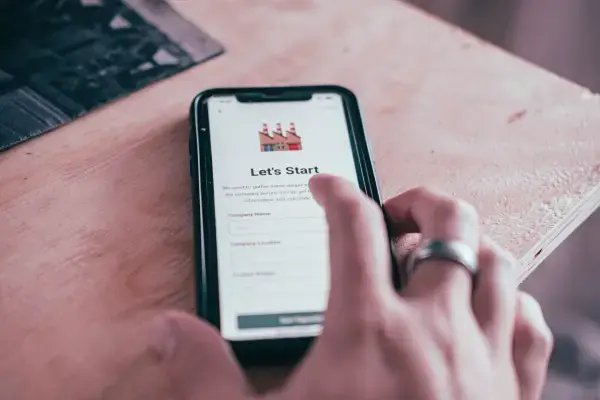It is universally agreed upon in the HR world that E-signatures can make your work life much easier. Let’s discuss the benefits of E-signatures and the challenges they can help you resolve by answering some FAQs.
What is an E-signature?
E-signatures, sometimes called electronic signatures, are used to sign documents digitally to acknowledge a contract – effectively replacing the need for a handwritten signature. E-signatures are most commonly used in the workforce during the onboarding process for new hires. Another valuable way to utilize the e-sign ability is when your organization changes its forms and compliance documents.
The Esign Act of 2000 grants legality to e-signatures in all 50 U.S. States, making it a legally binding document when utilizing an electronic signature. The European Union’s response is the EIDAS Act, which shows that their jurisdiction recognizes the need for e-signatures as well.
Types of E-signatures
With more of the onboarding process being digitized these days, new employees typically find themselves being prompted to e-sign their name after reading, filling out, or evaluating a vital document. If you choose to utilize an e-signature solution to help automate the signing process for your organization’s onboarding workflows, here are the different types to consider:
-
Manual Signature – One option is to duplicate the signer’s wet signature. This will typically require the employee to use a mouse or a trackpad to imitate writing out their handwritten signature with a pen.
-
Preselected Signature – Some online systems will permit users to select a pre-generated e-signature that makes an approximation of the signer’s own handwriting. They can then use this same e-signature to automate the signing process.
-
Digitally Printed Name – The last option is for the employee to use a printed version of their name instead of a regular signature. Typically, in this case, the system will present the user with a disclaimer that the employee will be asked to acknowledge, indicating that the printed name will be used in place of their handwritten signature.
How do I get an E-signature? Once I have one, how do I use it to e-sign documents?
Each type of e-signature will require a different method for creation. Typically, an electronic signature is created via the e-signature software that your organization uses to automate some of the document signing process while onboarding new hourly employees.
For example, apps like Salesforce and Microsoft Word work with the DocuSign electronic signature software, allowing users to quickly create an e-signature to sign electronic documents.
The steps are pretty simple:
-
Install the DocuSign add-in by going to the app’s menu bar’s insert tab and “Get Add-ins.” This will then open up your computer or phone’s app store. Type DocuSign in the Search bar and click “Add” to add DocuSign to Word, Salesforce, or whatever software you are using that works with it.
-
Find DocuSign in the Menu tab once the add-in has been successfully loaded. There should be a new menu option called “DocuSign.” Select that option, and then choose “Sign Document.” Follow the steps to create your signature.
-
To use your new electronic signature, drag and drop the Signature field to add it to the Word Document. Click “Signature,” found on the left-hand side of the page, and then click on the area in the doc where you want to include your e-signature. DocuSign will also provide the option to add initials, the date you signed, the printed name, and more.
-
Once you click the yellow button that says “Adopt and Sign” found at the bottom part of the window, your new signature will appear in the desired position on the document. Click “Finish” at the top of the page.
Now, your e-signature is ready to use whenever you need it! Other apps, such as Adobe, have their own electronic signature solution, which is just as simple to utilize!
What are the differences between an E-signature and a digital signature?
While many people tend to use the two interchangeably, there are several differences between an E-signature and a digital signature.
Both options help with the authentication of digital documents. However, there are various features that they do not share, and they have different applications.
Digital Signature’s primary function is to make it possible to identify a specific document while sealing and identifying the doc and protecting it from forgery, as well as safeguarding the signer’s identity. It uses a secure digital certificate in place of their wet signature. In contrast, an e-signature demonstrates the intent of a signatory to bind them legally through the terms of a document. In most cases, leveraging both technologies makes sense to make things more secure.
Use cases where an e-signature would be a better fit would be business contracts that show a signatory is choosing to agree with the terms laid out by the organization.
Trust service providers and certification authorities better serve a digital signature to validate and verify the digital document. The UETA (Uniform Electronic Transactions Act) states that a digital signature may be legally used in place of a paper signature.
How Do I Create a Digital Signature?
Now that you know how to create an E-signature, let’s discuss the creation of a digital signature. While the user can typically create E-signatures via contract parties in apps like Word, digital signatures are not made by a person. They are created by algorithms in software using advanced technology known as Public Key Infrastructure, which ensures data is transferred securely by generating a public and a private key. Since a digital signature relies on more strict security processes, it can be significantly more challenging to create than an e-signature, which is formed and added to the document by the user.
Generally speaking, your organization will likely be better served by employing E-signatures for HR purposes.
Why should my HR team switch to using E-signatures?
With the significant shift of the workforce into the remote realm, there are many benefits to using e-signatures during your onboarding process. Even in a more standard workplace, electronic signatures can streamline your organization’s HR workflows. Let’s take a look at some of the benefits below:
-
Going green - By allowing your new hires to e-sign digital documents, you are saving money and resources and cutting down on your use of paper and ink.
-
Saving tons of time - not only is an e-signature much quicker to write than a handwritten one, but it is also much more efficient to work with digital document templates for creating your HR docs, and it is faster to deliver them over email and file sharing services.
-
Working Remotely - the adoption of e-signatures will allow you to shift to a fully remote workplace if that is in the cards for your company. The recent pandemic forced organizations to change to a remote office structure, and the ability to e-sign documents is crucial to making it work. There is no more need for in-person signature workflows.
-
Safety and Security – E-signatures and digital signatures allow the secure sharing of sensitive documents.
-
Seamless transition – E-signatures work with various third-party applications allowing you to integrate your onboarding materials via the different document formats available. You can then share your docs through apps such as Dropbox and Google Docs.
-
Tracking Progress – It can be challenging to stay on top of the current status of a document, especially when it requires signatures from multiple people. An e-signature software solution will provide HR with an audit trail and real-time notifications to alert you when your document has been signed. These electronic records make the process incredibly simple.
Whether you need a more streamlined new hire onboarding process or a way to keep your sensitive documents more secure, electronic signatures can be the key to your continued success.





